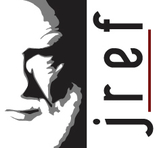
By Brennen McKenzie
Many alternative therapies are known to act mostly or entirely as placebos. Acupuncture, homeopathy, and many popular nutraceuticals like glucosamine consistently fail to demonstrate benefits greater than placebos in controlled clinical studies. Yet because of their placebo effects, they often make people taking them feel that their symptoms are improved.
Much debate has occurred around the question of whether such non-specific actions are truly beneficial and whether it is appropriate to encourage or discourage patients from using therapies with primarily placebo effects. In the case of human beings, the perception of relief may be of some value even in the absence of true improvement in one’s physical health. Physicians differ in their opinions about whether the use of placebos, and the deception of the patient this activity entails
, is ethical in clinical practice. However, the terms and details of this debate are quite different when the doctors are veterinarians, like myself, and the patients are non-human animals.
Many alternative therapies are known to act mostly or entirely as placebos. Acupuncture, homeopathy, and many popular nutraceuticals like glucosamine consistently fail to demonstrate benefits greater than placebos in controlled clinical studies. Yet because of their placebo effects, they often make people taking them feel that their symptoms are improved.
Much debate has occurred around the question of whether such non-specific actions are truly beneficial and whether it is appropriate to encourage or discourage patients from using therapies with primarily placebo effects. In the case of human beings, the perception of relief may be of some value even in the absence of true improvement in one’s physical health. Physicians differ in their opinions about whether the use of placebos, and the deception of the patient this activity entails
, is ethical in clinical practice. However, the terms and details of this debate are quite different when the doctors are veterinarians, like myself, and the patients are non-human animals.

